9 options for exterior decoration of a frame house
The technology of frame housing construction makes it possible to erect buildings of various shapes and use any style in the design of the facade. In order not to get confused in the variety of facing materials and choose the appropriate finishing option, it is necessary to conduct a comparative analysis of their parameters. It is important to take into account all the advantages and disadvantages, differences in prices and installation features of different options for the exterior of the house.
Facade material requirements
The facade is the calling card of any building. However, in addition to the decorative function, the cladding performs a number of other tasks: increasing the energy efficiency of the house and extending the service life of structural elements.
It is the facing material that takes over negative impact of external factors: temperature changes, high humidity, UV rays, mechanical shocks and others. When choosing a finishing method, one should evaluate not only the aesthetic aspect, but also the technical characteristics.
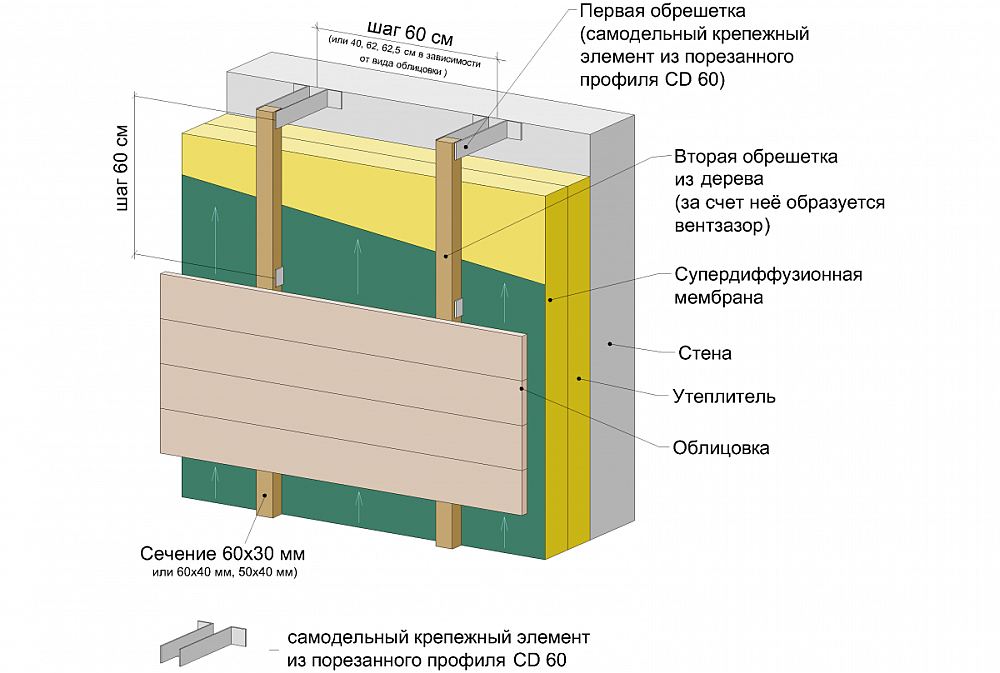
General requirements for cladding:
- Weather resistant. The material must retain its original properties and shape during temperature fluctuations, wetting and icing.
- High strength - the ability to withstand mechanical damage. Hail, gusts of wind and tree branches should not cause damage to the cladding.
Additional arguments in favor of the chosen material will be: affordable cost, low weight, simple installation technology, unpretentiousness in maintenance and care.
Popular solutions: the pros and cons of facade finishing options
We will evaluate the technical and operational characteristics of various methods of exterior finishing of a frame house. Comparison of the advantages and disadvantages will help determine the best option for arranging the facade.
Block house - imitation of log masonry
- planed board with a rounded outer surface. The use of material transforms the appearance of a budget building - an ordinary building looks solid and stylish, it seems that the house was built from a real log cabin.
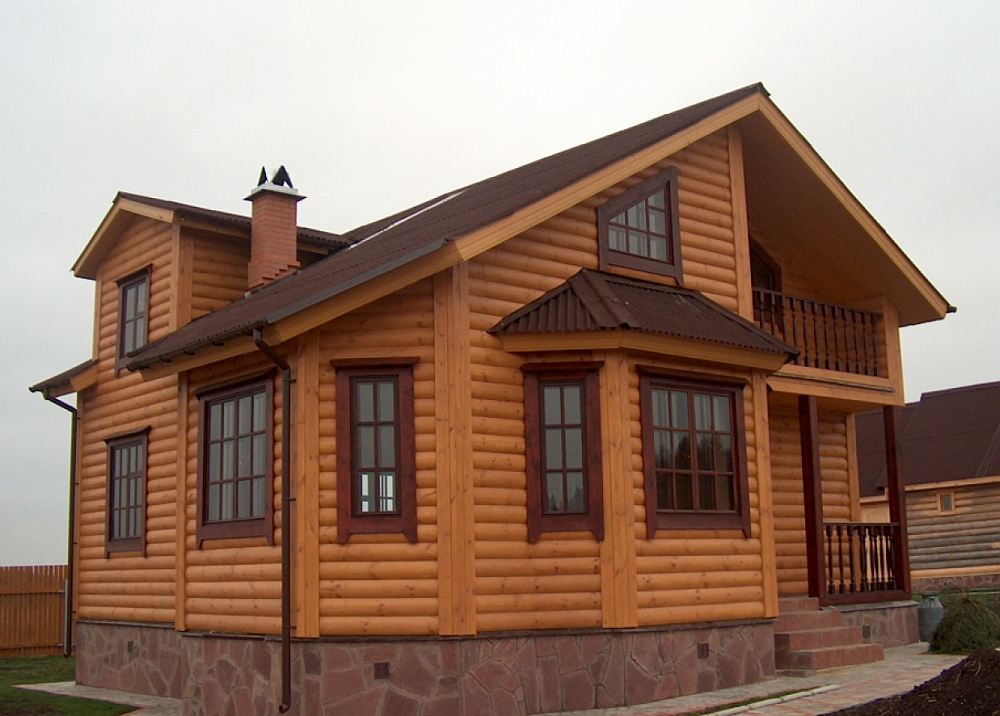
In addition to decorativeness, the block house has a number of advantages:
- environmental friendliness;
- good heat and sound insulation characteristics;
- ease of installation;
- color retention - wood does not fade in the sun;
- resistance to temperature changes.
Of the minuses distinguish: Moisture susceptibility and low fire rating. Using modern means for processing, it is possible to significantly increase the fire resistance and prevent wood decay.
In order for the block house to last for decades, you must adhere to the following tips:
- It is better to buy a board made of larch, oak or alder, spruce, maple and pine siding will do.
- The optimal width of the block house for the exterior of the frame house is 150 mm, the thickness is 40 cm.
- The highest quality lumber comes from Finland and America. When choosing between domestic products, it is better to buy a tree from the northern forests.
Wet cladding - the use of decorative plaster
Regarding this method, the opinions of experts differ. There are both supporters and opponents of plastering the walls of a frame structure.
Arguments in favor of a wet finish:
- Unlimited color palette. No other material provides such a choice of wall colors. The house can be made plain or decorated by combining several shades.
- Providing wind protection. A continuous plaster layer serves as a barrier to the wooden frame from wind, precipitation and atmospheric moisture.
- Good strength characteristics. Gypsum mortar is resistant to UV rays, daily temperature changes, high humidity.

Counterarguments of opponents of plaster:
- The complexity and duration of the process. Requires skilled preparation of the substrate and exposure 24-48 hours between applying layers of plaster.
- Durability of finish. Regardless of the quality of work, after 5-7 years, the lining begins to crumble and crack in places. This is due to temporary minor deformations of the frame of the house and subsidence of the foundation.
Facade brick: the feasibility of expensive cladding
Heavy wall materials are not used for the exterior decoration of frame houses: concrete slabs and stone. Such cladding requires a reinforced foundation, which is not typical for buildings built using Canadian technology.
Some use lightweight hollow facade bricks. The advantages of the material are obvious:
- high strength, resistance to mechanical damage;
- beautiful decorative effect;
- coating durability.
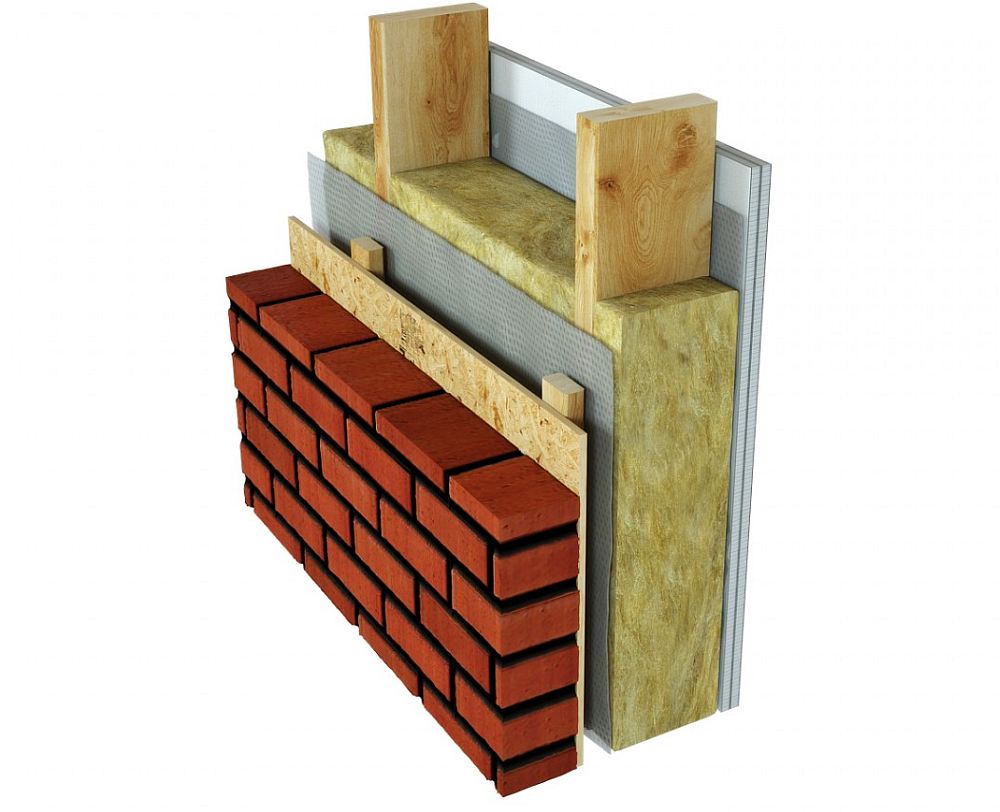
However, the difficulties with using bricks in frame construction are much greater:
- Cladding doubles the weight of the walls and requires reinforcement of the base. This moment must be thought out in advance - at the stage of laying the foundation.
- The loads placed on the walls of the house should be taken into account.
- Brick cladding is carried out with a flexible binding of the external masonry to the house. To do this, lay metal plates.
Frame technology is positioned as a budget construction, but not a cheap pleasure. Given the cost of the material and the difficulty of installation, the conclusion suggests itself: brickwork is far from the best way to cover the facade.
Vinyl siding - cheap and tasteful
The most affordable option for finishing exterior walls is vinyl siding. Plastic framing is especially popular in Western countries and warm climate regions.
Distinctive features of PVC panels:
- Low cost. This is the most economical option for decorating external walls. Vinyl fully corresponds to the price-quality balance.
- Practicality. The material is picky in care, resistant to moisture and the sun. The appeared pollution is easily wiped off.
- Maintainability. To restore the facade, it is enough to replace the damaged element - it is not necessary to remove all panels.
- A light weight. Great for buildings with lightweight foundations. An additional plus is the clear and simple installation technology.
- Decorative. PVC siding is sold in a variety of colors and paneled to give your home a modern and well-maintained look.
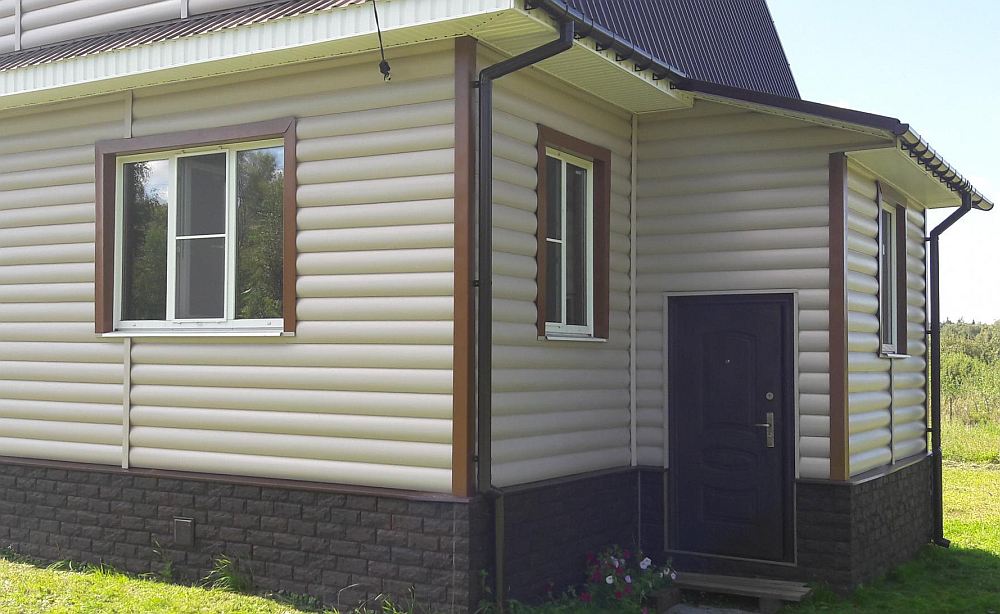
Despite the many advantages, polymer cladding cannot be called the optimal solution. The main disadvantage is low strength, the brittleness of the material increases at negative temperatures.
Thermal panels - insulation and cladding
Thermal panels are plates with a hard outer coating and a layer of thermal insulation inside. This type of cladding is considered to be one of the most acceptable materials for frame houses. The most popular option is thermal panels with clinker tiles.
Among the main advantages are:
- High operational properties. Clinker paired with insulation (polystyrene foam or polyurethane foam) increase the thermal efficiency and noise protection of the house. Thermal panels are not afraid of heat or severe frosts, they are resistant to mechanical damage, are not afraid of moisture and are not attractive to rodents.
- Ease of installation. Permissible year-round wall cladding - plus temperatures are not required, there are no wet works.
- Vapor permeability. Moisture removal is ensured by the property of clinker and insulation to “breathe”. This allows installation without subsystems and air gaps.
- Decorative. The panels are fixed end-to-end, and after finishing grouting, the impression of solid stone or brickwork is created.
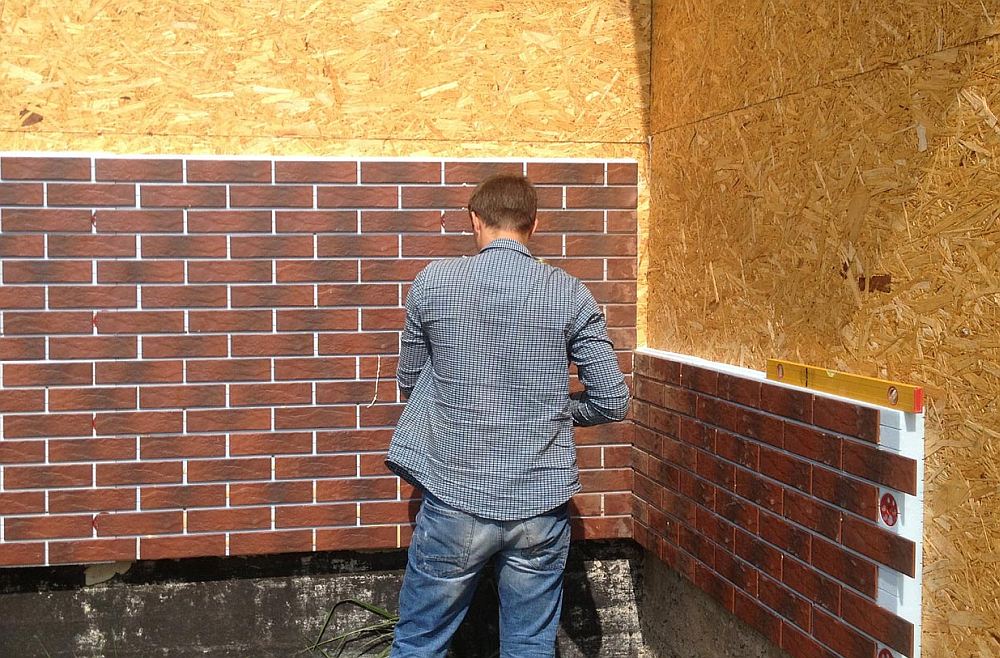
Thermoplates weigh a little and do not exert significant pressure on the walls and foundation. The only drawback of the method is the price. However, the waste is fully justified and pays off with long-term service.
DSP sheets - a variety of design styles
Fiber cement or cement particle board - monolithic mats made of wood, cement and stone chips. Standard dimensions of DSP: length - 2.6 or 3.2 m, width - 1.25 m, thickness - 35 mm. Such dimensions allow you to sheathe large areas in a short time.
wood-cement structure endowed the facing material with many advantages. Main advantages:
- environmental friendliness and durability;
- impact resistance and resistance to pests;
- manufacturability - they are easy to process with different tools;
- good soundproofing properties;
- fire resistance and moisture resistance.
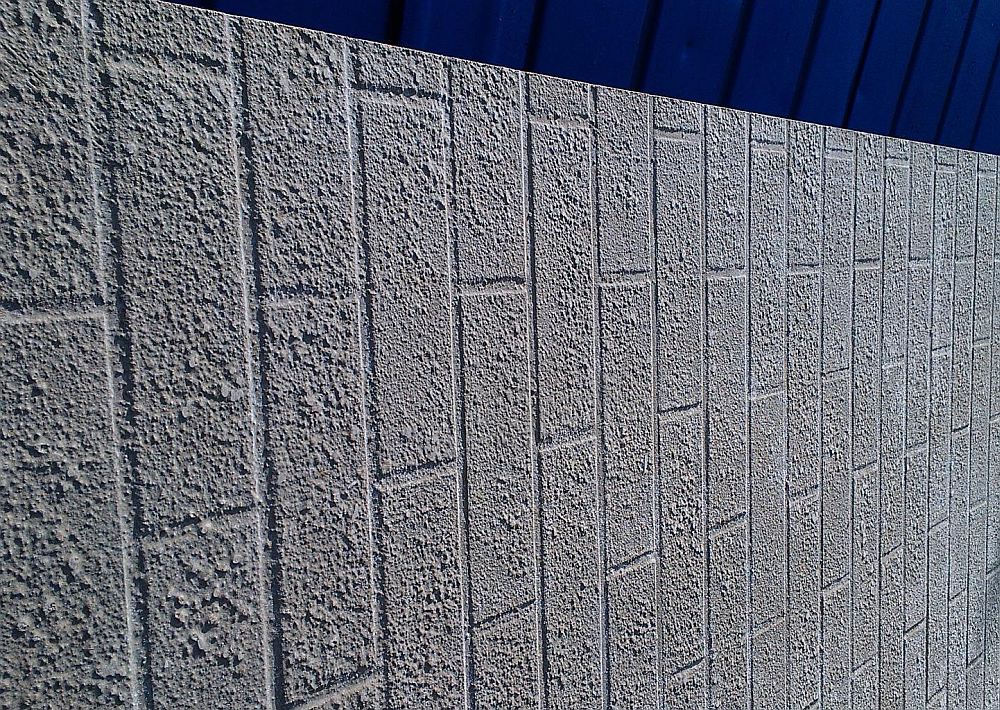
By themselves, DSP boards are plain, but they are an excellent basis for the implementation of many design ideas. Popular options: painting the walls with paints or decorating the facade in the Scandinavian style Fachwerk.
The relative disadvantage of DSP is the need to attract an assistant for high-altitude installation work due to the large dimensions of the facing sheets.
Brick effect tiles and natural materials
Facade finishing clinker tiles imitating natural stone or brickwork, gives the structure solidity and solidity. In this case, the load on the foundation does not increase significantly.
The advantages of tiling include:
- coating strength, chemical and biological inertness;
- moisture resistance and fire safety;
- large operating temperature range;
- variety of colors, shapes and textures.
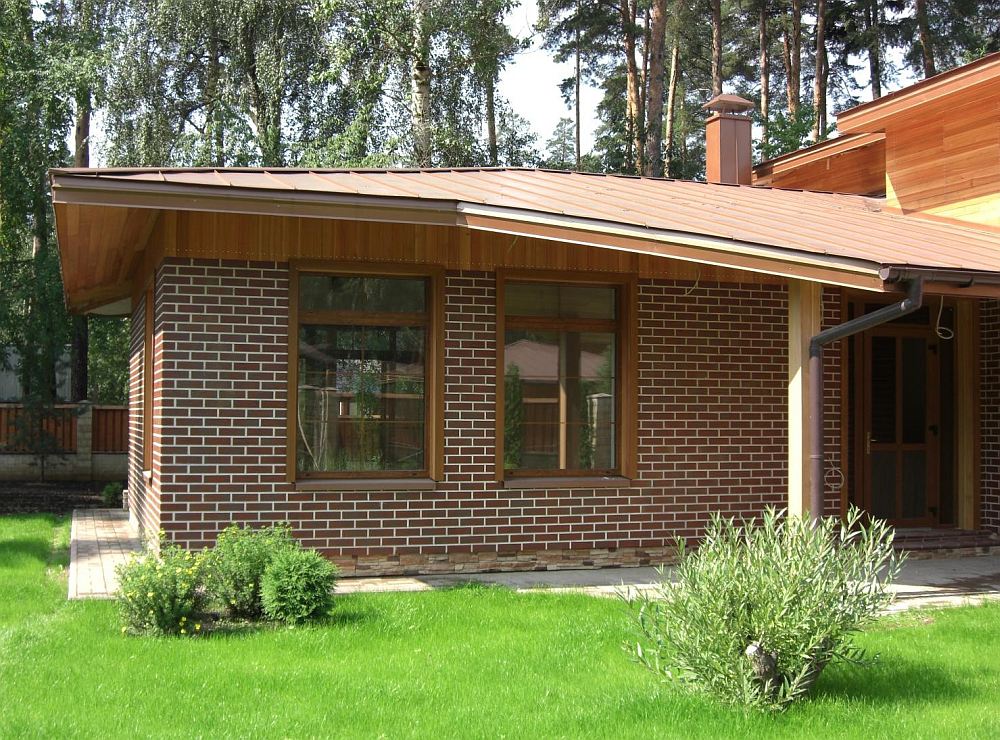
Finishing technology provides for the creation of a ventilated facade. A wall screen is attached to a crate made of timber or a metal profile. Further laying is carried out according to the standard scheme: mortar layer, reinforcing mesh, glue and facing material.
Minus finishing- the complexity of the installation process. Laying tiles takes a lot of time and requires certain skills from the performer. Works are carried out at positive temperatures in dry weather.
Smart side - a new word in cladding
Smart siding is a facade material based on class 4 oriented strand board. The front side is a relief texture similar to wood, the back side is OSB-4.
Smart series panels gradually gaining popularity due to positive qualities:
- no temperature linear changes;
- ease of processing and installation - smart siding is fixed to the battens;
- resistance to adverse weather conditions;
- aesthetics - the facial texture conveys the structure of the tree.
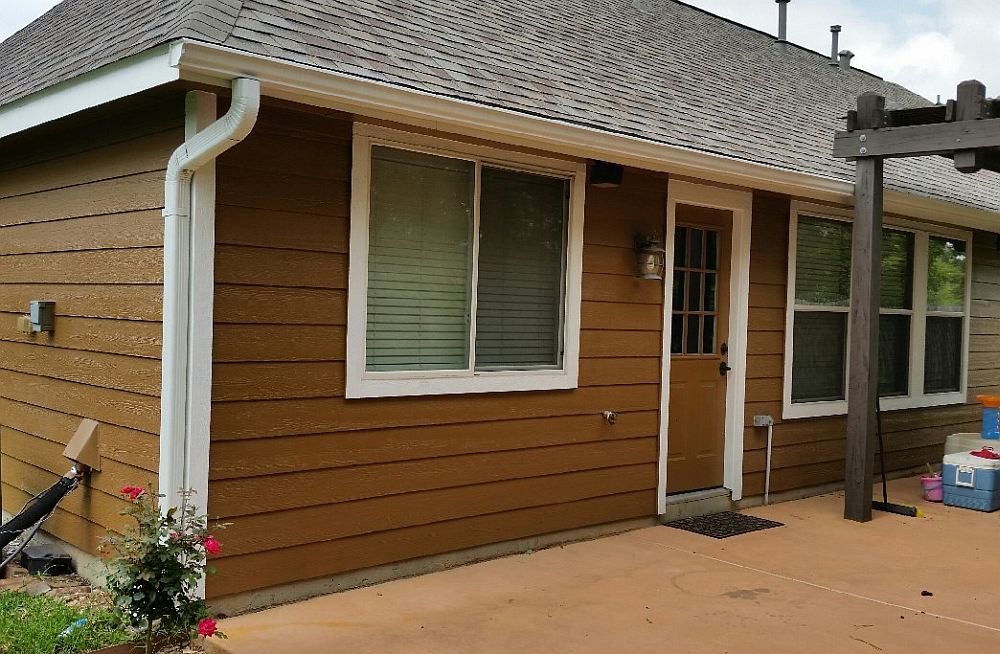
Facade panels are characterized by limitations:
- smart siding needs painting after installation;
- the use of flame retardant impregnations does not make the material absolutely fireproof;
- the possibility of mold and decay with constant wetting is not ruled out.
Despite the assurances of the manufacturers, smart panels are quite heavy and create a load on the walls. In terms of price, the material is inferior to clinker tiles and thermal plates, but surpasses PVC siding.
Alternative facade cladding options
In addition to these technologies, other cladding methods are used in frame housing construction. Most interesting:
- metal siding;
- composite planken;
- marble chips.
metal siding. The panels are made of galvanized steel and covered with a protective layer of paint. Facade works are characterized by simplicity and speed of installation. Additional advantages: low cost and light weight. 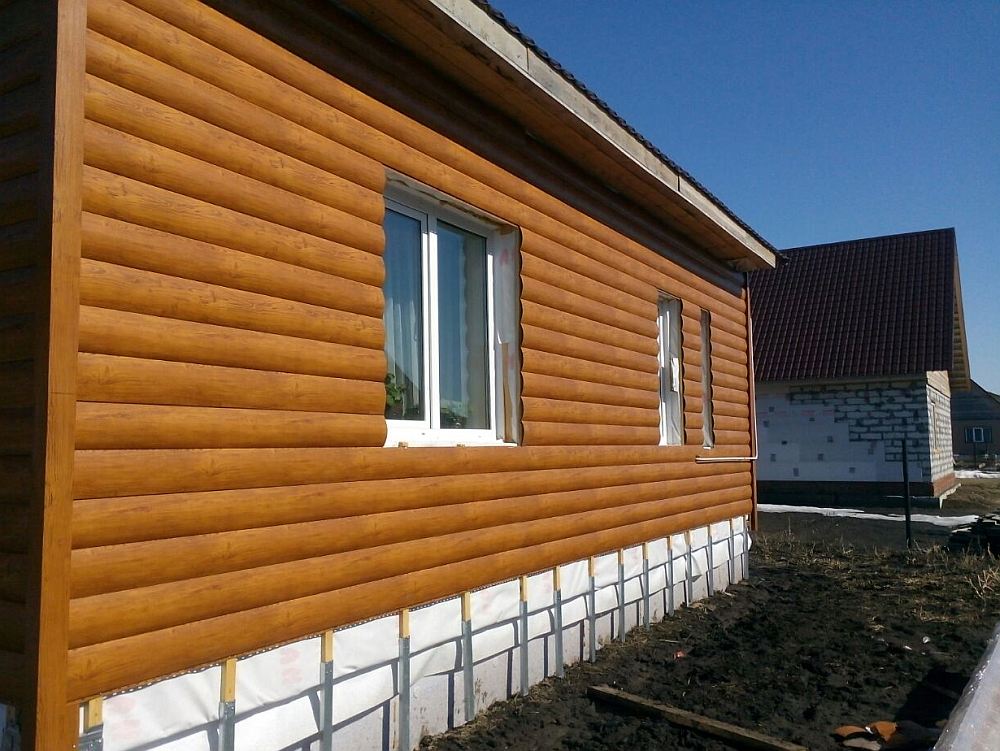
Disadvantages of metal cladding: susceptibility to corrosion, denting upon impact and scratches. Siding gets very hot in the sun and shields.
Composite planken. Outwardly, the material resembles a planed board, but in addition to wood, it contains polymers. Such a tandem made it possible to preserve all the advantages of natural wood, giving the cladding moisture resistance and fire resistance.
Marble chips. In fact, this is the same plaster, but covered with "stone powder". The addition of crumb increases the wear resistance of the facing coating and prevents color fading.
The nuances of choosing an exterior finish
When deciding how to sheathe external walls, one should take into account the climatic features of the region, the type of insulation used and the purpose of the facade.
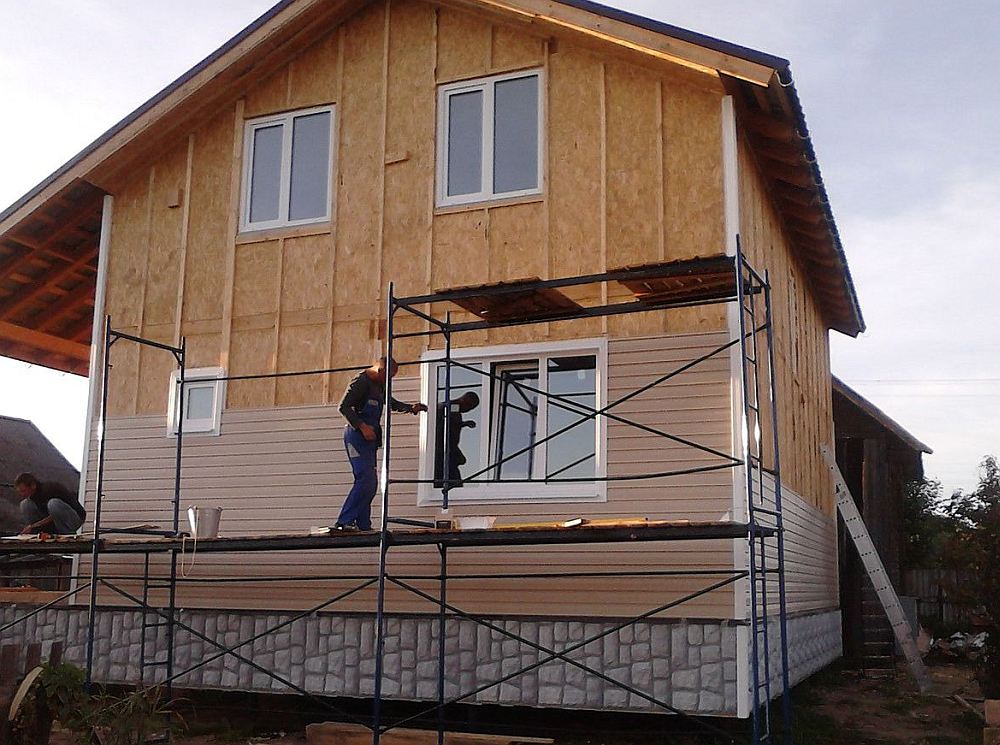
- For rainy, damp areas, it is better not to use a block house and wood analogs. Residents of cold regions should abandon metal siding, preferring thermal panels or DSP.
- Walls insulated with mineral wool can be lined with siding, block house or clapboard. The least suitable option is plaster. Wet facade is applicable for polystyrene and its derivatives.
- If the main purpose of the sheathing is decor, then the choice of material depends on the personal preferences of the owners of the house. If with the help of cladding it is necessary to additionally insulate the building, then it is better to use thermal panels and hinged facades (siding, fiber cement boards).
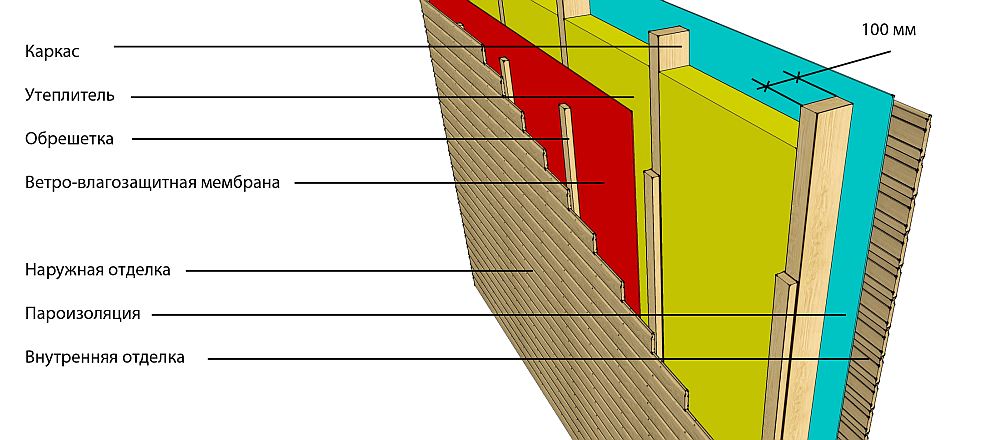
Exterior decoration of the frame house is carried out with various materials. From the point of view of the ratio of price and quality, the most optimal options are: thermal panels and DSP sheets. Expensive cladding from a block house will be adequately replaced by a composite planken, and it is better to refuse facade bricks and time-consuming plastering of walls.
Video: the cheapest frame house finish
For those who are set to save money, this video will be useful.
